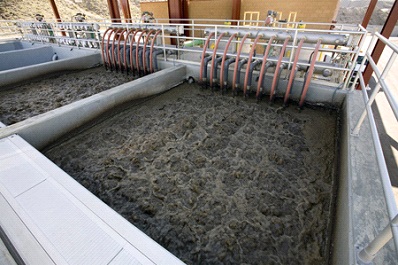
Greywater treatment using MBR technology
Using MBR technology for greywater treatment has numerous long-term advantages and benefits. Greywater refers to all sewage wastewater generated in homes or office buildings from sources other than toilets. By definition, greywater generally includes wastewater from bathing, sinks, laundry, and washing machines, without fecal contamination. Greywater treatment is easier compared to municipal wastewater treatment, which generates significant interest in its reuse and recycling. Typical applications for greywater recycling and reuse include toilet flushing, irrigation, and other non-potable uses.
Using MBR technology as a common technique for greywater treatment
Greywater treatment techniques encompass a range of processes and technologies used to purify and treat greywater, which is water produced from non-potable uses such as bathroom sinks, showers, dishwashers, and more. Greywater treatment technologies are applied to improve water quality and utilize it for purposes like irrigation or reuse in heating, cooling, and toilet systems.
Common techniques for greywater treatment:
- Filtration: Filtration processes are used to remove impurities and large particles from greywater. Mechanical or physical filtration systems can be employed to achieve this.
- Biological Treatment: Biological treatment processes utilize microorganisms such as bacteria and fungi to transform and break down organic matter present in greywater. Examples include septic tanks, anaerobic treatment ponds, aerobic treatment ponds, and MBR technology.
- Advanced Purification Techniques: These techniques employ sophisticated processes to remove organic pollutants, heavy metals, radioactive materials, and other chemicals from greywater. Examples of these techniques include ultraviolet radiation, reverse osmosis, ion exchange, and ozonation.
- Reuse: This technique involves treating greywater and using it again for non-potable purposes such as irrigation, heating, and cooling. Greywater routing systems and advanced filtration are implemented to ensure that the treated water meets the necessary standards for the intended use.
The aim of greywater treatment techniques is to improve water resource sustainability and reduce our reliance on freshwater for non-potable uses, contributing to the preservation of water resources and alleviating pressure on the environment.
Reusing wastewater is an essential part of sustainable water resource management. Greywater can be a valuable alternative water source, especially in arid regions where water demand is high during drought periods.
The potential environmental benefits of greywater recycling include:
- Reduced extraction of freshwater from rivers and groundwater aquifers.
- Less environmental impact compared to sewage tanks and wastewater treatment plants.
- Decreased energy usage and chemical pollution associated with water treatment.
- Groundwater recharge and nutrient extraction.
However, greywater can become contaminated with various soluble and insoluble substances and should be treated properly. Contaminants in greywater typically include dirt, food particles, fats, hair, and some household cleaning products. Typically, air and biological treatments are used as primary greywater treatment to remove dissolved and suspended organic matter, followed by ultrafiltration to prevent the passage of particles, bacteria, and viruses. Ultimately, greywater can be disinfected using ultraviolet radiation and/or chlorination to ensure residual disinfection at the point of use.
In densely populated desert areas where space is limited and valuable, there is a need for compact and reliable solutions, making membrane bioreactor (MBR) technology a highly attractive option. The MBR process combines activated sludge treatment with membrane filtration (either ultrafiltration or microfiltration). MBRs offer distinct advantages compared to traditional treatment systems.
These characteristics using MBR technology are the optimal solution for greywater treatment and recycling:
- Highly stable process and compact design.
- High-quality effluent and low sludge production.
- MBRs replace clarification devices and media filters, reducing reactor size by combining physical membrane barriers with biological treatment.
- CareWater Solutions provides sustainable and comprehensive solutions for greywater recycling, considering a wide range of technologies and strategies. With increasing water demand and water scarcity worldwide, greywater reclamation offers a suitable solution for reducing water footprint and costs.
Our benefits include:
- Engineered and customized solutions for unique greywater recycling systems and specific equipment needs.
- Integrated solutions encompass design, engineering, manufacturing, automation, installation, maintenance, and training.
- State-of-the-art technologies for efficient wastewater and sewage treatment, recycling, reuse, and disposal.
- Best online assistance and on-site service and support.


























